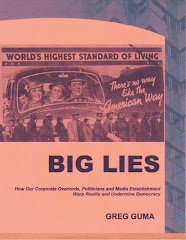 |
| Sen. Pat Leahy has fought to save an alternate F-35 engine that would mean jobs at a Rutland GE plant. |
Dire
warnings that thousands of Vermont jobs are at risk due to looming defense cuts
and related changes in Air Force priorities may turn out to be overstated, or
at least premature.
In
March, a report commissioned by the Aerospace Industries Association (AIA) predicted
that Vermont would lose upwards of 2,100 jobs if automatic defense cuts were
triggered by the failure of Congress to reach a budget deal. Vermont
Air National Guard jobs were reportedly also on the line. Under the Pentagon’s
initial budget the Air Guard could see a loss of 9,900 jobs nationally over the
next five years, including 3,900 active duty personnel and 900 members of the
Air Force reserve.
Two
months later such outcomes look less likely. Research meanwhile indicates that
funding for clean energy, health care, and education would create substantially
more jobs.
The
AIA study, conducted for the aerospace industry in 2011 by
Dr. Stephen Fuller of George Mason University, projects that
more than a million jobs could be lost nationwide if sequestration leads to a projected
$600 billion cut in the defense budget. The Pentagon and other analysts
forecast more conservatively that $1 trillion in cuts over a decade would add
one percentage point to the unemployment rate.
"The
data speaks for itself, America's aerospace and defense industry is a sector
that punches far above its weight," claims AIA President Marion
Blakey. "And it's not just the
numbers, which are impressive by themselves— it's how this industry makes a
difference in the lives of all Americans."
On
the other hand, he predicts that cuts brought on by sequestration will
“devastate our industry's contributions to America's bottom line.”
Similar
arguments were made during the recent Air Force public hearing on stationing
F-35As with the Air Guard at Burlington International Airport. Gov. Peter
Shumlin is one of several Vermont officials who have endorsed bedding 18 to 25
of the pricey, long-awaited aircraft at the airport in Burlington based on jobs
and economic factors. In a statement he argued that drawbacks such as increased
noise “are outweighed by the extraordinary benefits that this opportunity
presents our communities and our state.”
Business
leaders contend that the presence of the Air Guard is a magnet attracting
investments and jobs in aerospace. This is true, but only to a limited extent.
The largest contractors, which take in at least 75 percent of Vermont’s total defense
funding, have nothing directly to do with the presence of Air Guard. Other
smaller firms across the state produce equipment and services for diverse
military purposes, and sometimes for dual military-civilian uses.
A new
economic study concludes that investing the same amount of money in clean
energy, health care, or education would produce more jobs. Documenting the
fluctuating, “boom and bust” nature of military spending, previous research indicates
that spending reductions during the 1980s and early 1990s deepened the job
losses in New England and slowed the pace of its employment gains in the
subsequent economic recovery.
Comparing employment ripples
In
1986 General Electric was the largest defense contractor in Vermont, receiving
$270 million (80 percent of all contracts that year) for high-tech gatling guns
used on helicopters. The second largest contractor was Simmonds Precision,
which won $19 million.
Other
significant players included Joslyn Defense Systems in Shelburne, Damascus Corp.
in Rutland, and the University of Vermont. Joslyn was the promising newcomer,
growing rapidly to 160 employees by producing a braking system for the B-22
bomber and electrical interfaces between aircraft and weapons systems.
Nationwide,
defense-related employment in the private sector accounted for 3.6 million jobs
in 1987, or 3.5 percent of all private nonfarm employment. By 1992, however, more
than 700,000 defense-related jobs had been eliminated. As a result GE cut more
than 14 percent of its aerospace jobs, including more than 650 at its
Burlington plant in under two years.
In a 1995
research paper, “The costs of defense-related layoffs in New England,” published
by the New England Economic Review, Yolanda K. Kodrzycki concluded that the negative
economic ripple was disproportionate in New England during the previous recession.
Defense contracts fell at a greater rate than the national average, and a far
greater percentage of jobs were cut at New England military bases.
Military
contract cutbacks accounted directly for a 1.7 percent drop in New England
employment in the years following 1989, almost a third of the total net drop.
As a GE spokesperson acknowledged, even when contract money was doubling in
good times the number of jobs did not significantly increase.
The
1995 study also examined the experiences of about 5,000 former defense workers
after their layoffs. Changes in the region's mix of jobs and needed skills meant
that former defense workers had special difficulty finding work, and especially
in landing jobs at a similar income. The
problems were most serious for older workers and those without a college degree,
the study concluded.
A
more recent report, “The US Employment Effects of Military and Domestic
Spending Priorities: 2011 Update,” concludes that every $1 billion devoted to
clean energy, health care, and education “will create substantially more jobs
within the US economy than would the same $1 billion spent on the military.” The findings are the same across all pay
ranges.
Since
2001 the level of military spending has increased an average of 5.3 percent a
year, point out authors Robert Pollin and Heidi Garrett-Peltier, economics
faculty members at the University of Massachusetts. In 2010 the US defense
budget was $689 billion, or about $2,200 for every US resident.
As a
share of Gross Domestic Product (GDP) military spending rose from 3 to 4.7
percent during the last decade. More than 650 Vermont-based businesses handled
$621.3 million in defense contracts last year, down from $827 million in 2010.
Between 2000 and 2011, contractors brought in a total of more than $7.5 billion,
according to data available at governmentcontractswon.com.
Two corporations, General Dynamics in Burlington and Simmonds Precision in
Vergennes, received between 70 percent and 95 percent of the money.
The
often-mentioned “ripple effect” of defense spending includes the jobs directly
created by production, various goods and support services that are needed –
everything from steel and electronics to trucking, and the “induced effects”
when those who are involved in military production spend the money they have earned.
Based
on such calculations, military spending creates about 11,200 jobs for each
billion dollars spent, the study says. This is much fewer than the 16,800 that
could be generated by investments in clean energy, or the 17,200 that would
result from health care spending. “Spending on education is the largest source
of job creation by a substantial amount, generating about 26,700 jobs overall
through $1 billion on spending, which is 138 percent more,” the report states.
More
jobs are also created when a higher proportion of the funding is spent within
the country. In this regard, the report notes that US military personnel spend
about 43 percent of their income on domestic goods and services while civilians,
on average, spend 78 percent of their income at home.
Jobs
associated with the military tend to pay well and provide more generous
benefits. Average wages for military employment is $58,000 a year, compared
with $50,000 for health care, energy and education jobs. The main factor
driving the difference is the extensive health coverage for members of the
military.
On
the other hand, spending on education, health care and clean energy generate
more jobs at a variety of pay levels. Comparing clean energy to military jobs, for
example, the study concludes that almost 6,000 jobs paying between $32,000 and
$64,000 would be created in clean energy. Military spending would generate
4,700 mid-range jobs, or 15 percent fewer.
This is the second of a series of articles about the effects of the defense industry in Vermont. Part One is available on VTDigger.org: "Vermont's Defense Industry Grows "Under the Radar."































